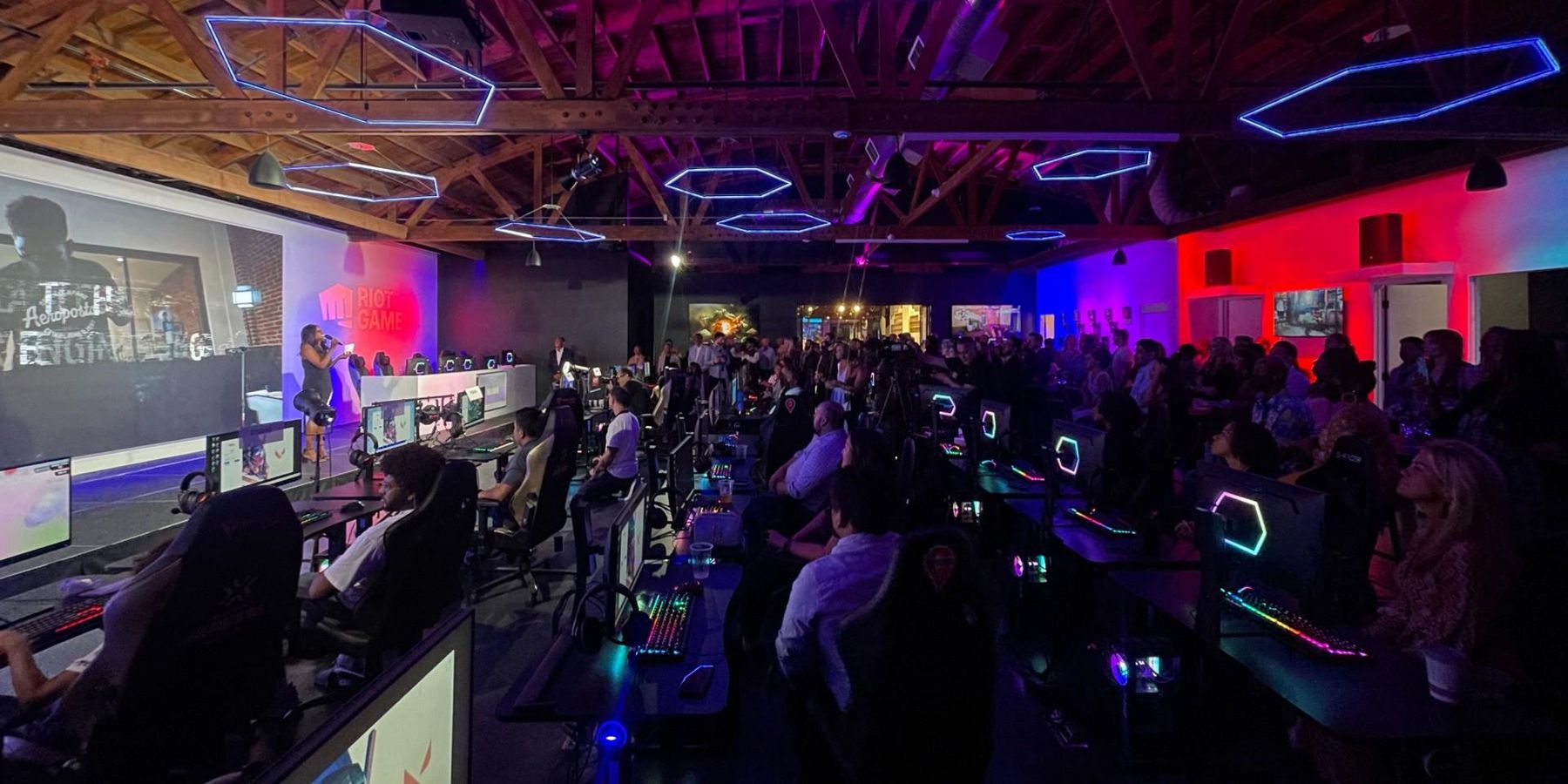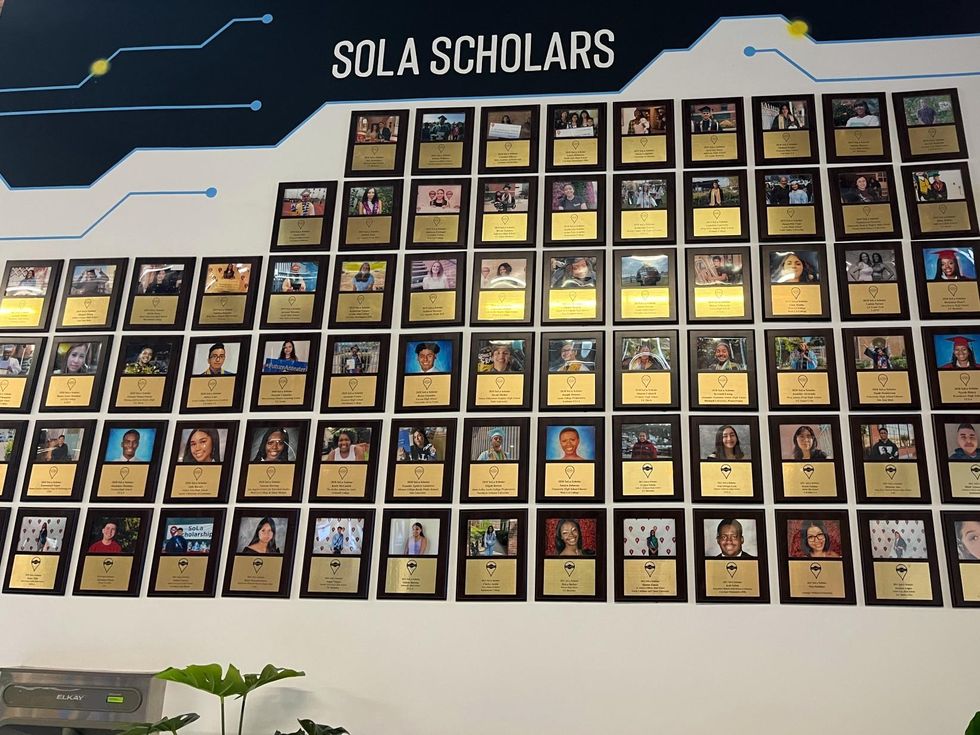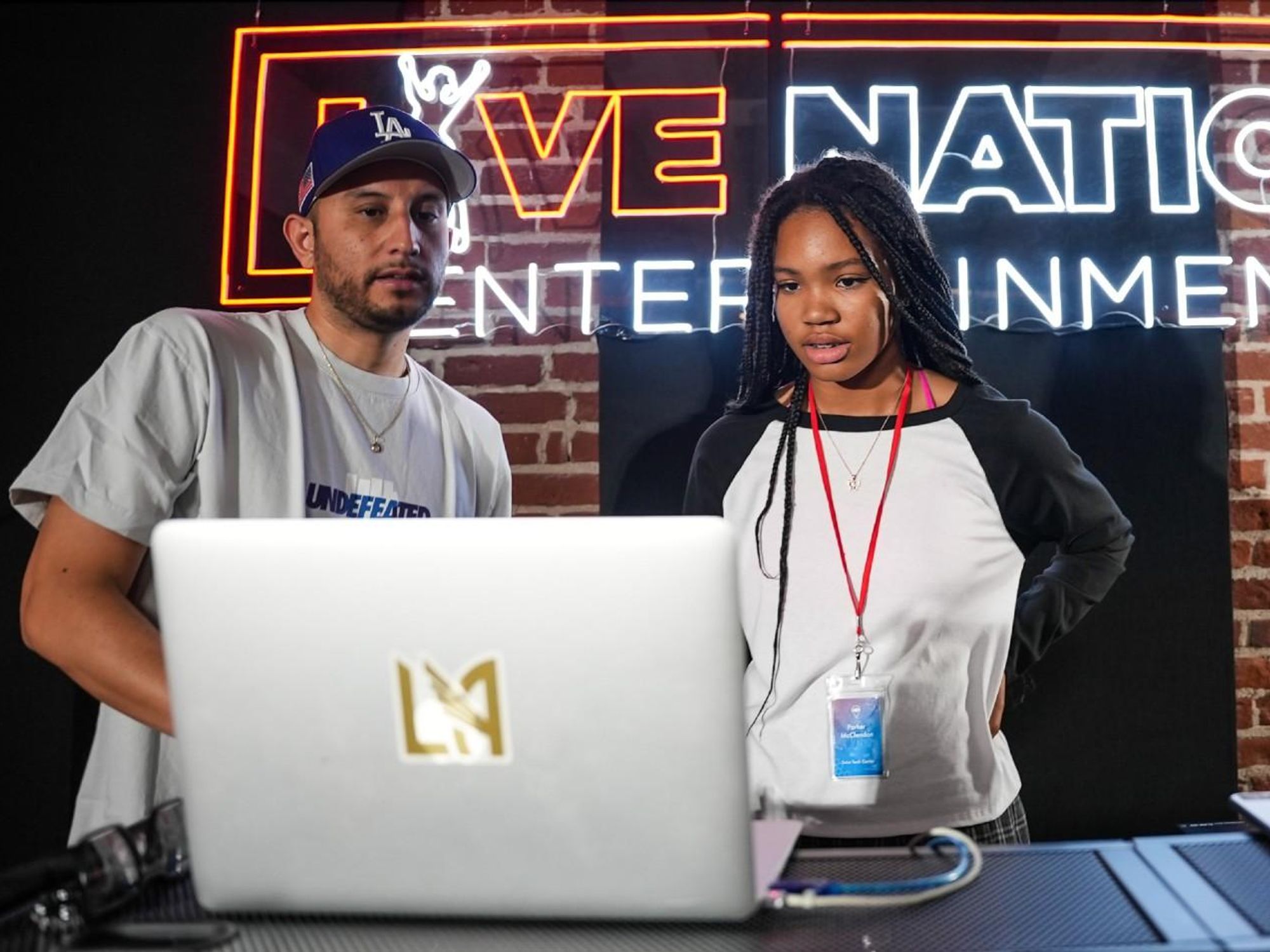

Get in the KNOW
on LA Startups & Tech
X
Photo by Giordano Rossoni on Unsplash
Netflix Lays Off 150 Employees
Christian Hetrick
Christian Hetrick is dot.LA's Entertainment Tech Reporter. He was formerly a business reporter for the Philadelphia Inquirer and reported on New Jersey politics for the Observer and the Press of Atlantic City.
Netflix is laying off roughly 150 people after the streaming giant lost subscribers last quarter.
In a statement to dot.LA, a Netflix spokesperson said the company’s slowing revenue growth means it must rein in its costs.
“So sadly, we are letting around 150 employees go today, mostly U.S.-based,” the spokesperson said. “These changes are primarily driven by business needs rather than individual performance, which makes them especially tough as none of us want to say goodbye to such great colleagues. We're working hard to support them through this very difficult transition."
The job cuts amount to 2% of the company’s workforce, according to the Hollywood Reporter. The streaming giant is eliminating 70 roles in its animation division, and cutting contractor jobs in social media and publishing channels, THR reported, citing a company memo. Affected employees are expected to receive severance packages starting at four months.
The layoffs come just a few weeks after Netflix laid off about 25 people in its marketing division, including at its editorial website Tudum.
Netflix shares have cratered since the streaming platform reported that it lost 200,000 subscribers during the first quarter—the first time the company shed customers in more than a decade. The company also expects to lose 2 million more in the current second quarter. The streamer blamed increased competition, password sharing and the war in Ukraine, among other issues.
During the earnings call in April, Netflix CFO warned that over the next two years, “we're kind of operating to roughly that operating margin, which does mean that we're pulling back on some of our spend growth across both content and noncontent spend.”
From Your Site Articles
- Netflix Lays Off Journalists Months After Hiring Them - dot.LA ›
- Netflix Employees Could Face More Layoffs as Stock Falls - dot.LA ›
- Netflix Facing Another Round of Layoffs: Report - dot.LA ›
Related Articles Around the Web
Christian Hetrick
Christian Hetrick is dot.LA's Entertainment Tech Reporter. He was formerly a business reporter for the Philadelphia Inquirer and reported on New Jersey politics for the Observer and the Press of Atlantic City.
Inside SoLa and Riot Games’ State-of-the-Art Center in South LA's 'Tech Desert'
06:00 AM | September 07, 2022
Image courtesy of SoLa Impact
It’s a blisteringly hot afternoon as high school students stream out of the Diego Rivera Learning Complex in South Central Los Angeles. What these teens don’t yet know is that a brief walk down the alley behind their bus stops at Central and 60th, there’s an oasis of air conditioning and state of the art gaming equipment waiting for them – SoLa Impact’s Tech and Entrepreneurship Center, sponsored by Riot Games.
The minute the gates on E. 61st street open, it’s easy to forget the clutter and chaos of South Central’s industrial alleys as the clatter of nearby recycling shops fades. But it’s not always this quiet at the Beehive, according to SoLa’s chief impact officer Sherri Francois and director of partnerships Daniel Rosove.
The facility had its grand opening Aug. 11, welcoming in 200 people to explore the campus and learn about SoLa Impact’s various programs, which are run through its nonprofit I CAN Foundation. The next round of programs begins Sept. 11, 2022. There’s a one-time annual $25 membership fee, which includes unlimited access to the Tech Center and its gaming lab. The I CAN Foundation also offers scholarships, and recently helped send 25 students to college this fall.
SoLa’s mission is to bridge the digital divide between the greater L.A. tech economy and its minority population. Its mantra, Francois said, is “if you can see it, you can be it.” Those words are in several places in the Tech Center to remind the students (ages 8-18) who come through the doors of their potential, including a mural and desktop wallpapers in the center’s sparkling new computer lab.
“South L.A. is a tech desert,” Francois told dot.LA. “Less than half our service population have computers in their homes, [and] the majority of our local schools lack any type of technology programming, or tech enrichment… the access to technology training is dismal.”
Riot Games recently stepped up and donated $2 million to help launch the center. Its co-founder and president Marc Merrill also donated funds. Other local sponsors include Snap Inc., which also ran a Snap Summit to teach students about mixed-reality, the L.A. Kings, the L.A. Rams, LiveNation and its CEO Michael Rapino. Additional donors include Oprah Winfrey, NWA’s Arabian Prince, and mayor Eric Garcetti’s Angeleno Connectivity Trust.
“What drew us to SoLa was this was a neighborhood for the kid to kind of come in and see what is possible,” Riot Games’ director of social impact Jeffrey Burrell told dot.LA.
A minimum of 1,000 students are expected to come through the Tech Center’s doors in its first year.
"SoLa has been one of the most impactful programs I have ever been a part of," J.J. Flores, a 2021 SoLa scholarship recipient and current environmental studies major at USC, told dot.LA via email. "SoLa provides me with yearly care packages, they made a mini-doc to feature my story, and they provide me with an incredible network of people that truly believe in my potential and want to see me succeed."
Flores added, "seeing the entire program evolve into a bigger and better thing by the day... with its new tech and entrepreneurship center, a space for community events... is such an inspirational thing because it shows me that they're doing all this because they truly see the potential that South LA students like me have."
Here’s a look inside the Tech Center—though Francois and Rosove both encouraged people to drop by and see for themselves. “Outside of Riot and Snap, we haven’t been able to tap into the L.A. tech industry,” Francois said. “One of our goals is to establish better partnerships,” she said, adding that most CEO’s haven’t yet come to visit, but she’d welcome a drop-in.
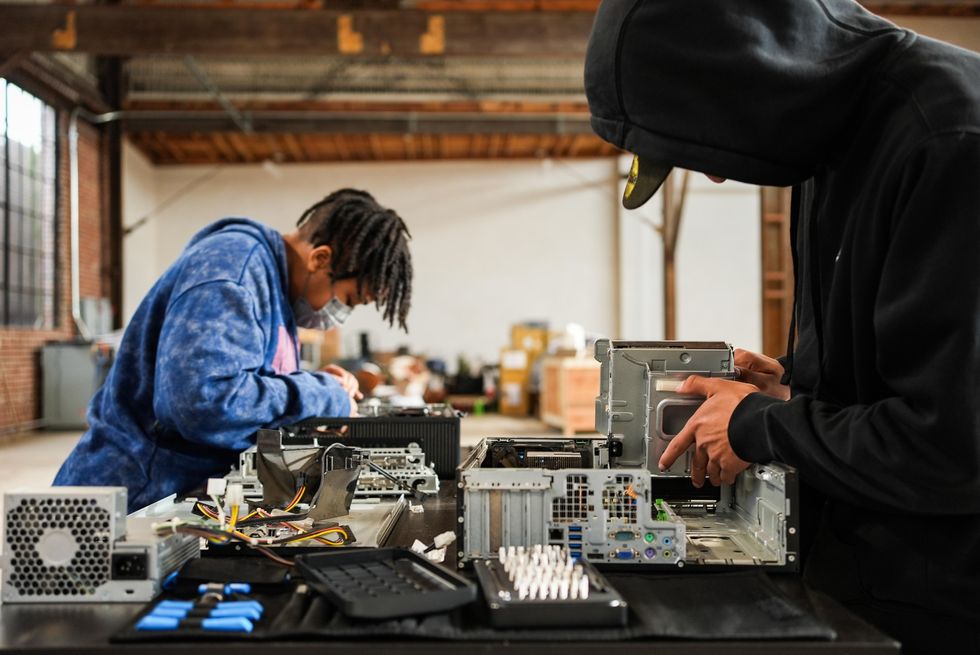
First Impressions
Don’t mistake the icon for the London Underground logo–Francois and Rosove told me SoLa’s symbology was inspired by a Google Map pin. SoLa’s I CAN nonprofit is part of a larger umbrella of community initiatives including SoLa Impact, which manages 1,500 apartments for low-income residents, and it was the first to utilize the pin logo, Francois said.
Francois’s brick-lined office is nestled into the right corner when you enter, and on the left there’s some administrative offices. Behind the reception desk is a glitzy wall with glass plaques acknowledging the center’s donors. What really catches anyone’s eye is the neon sign above the check-in desk, proudly proclaiming “powered by Riot Games.”
“Absolutely none of this would be possible without Riot,” Francois said.
Computer Lab and 3D Printers
The computer lab is impressive, with brand-new Macs that would be at home at a visual arts college. Of course, there’s brand-new fiber optic internet, which Rosove said had to be installed from scratch, since the building – and most of South Central L.A. – isn’t wired for high-speed internet. “Most of the internet access is through phones for these folks,” he noted.
An anonymous donor recently contributed 10 3D printers, which will be used in a CAD design program to teach students how to create their own models. On a lab shelf – interspersed with Riot Games memorabilia from its hit “League of Legends” title – Rosove pointed out a couple of freshly printed Easter Island heads ( Moai) made recently by students, giving a big thumbs-up.
Emblazoned in bold colors on the wall dividing the computer lab from the kitchen area is Francois’s mantra, “if you can see it, you can be it.” Heading towards the gaming lab and jam room, there are two walls filled with plaques celebrating SoLa’s 124 scholarship recipients and a tantalizing row of four classic arcade games.
Across from the lab there’s a room for students complete with a green screen and closet retrofitted to be a podcast studio, basically the video production hub. As Francois got her start as a producer for CNN, NBC News and HGTV, it was important for her to have a media room for other people to learn the trade and create a portfolio. “That’s quite a core part of Sherri’s vision of folks have to be really building a personal portfolio as part of their time here,” Rosove said.
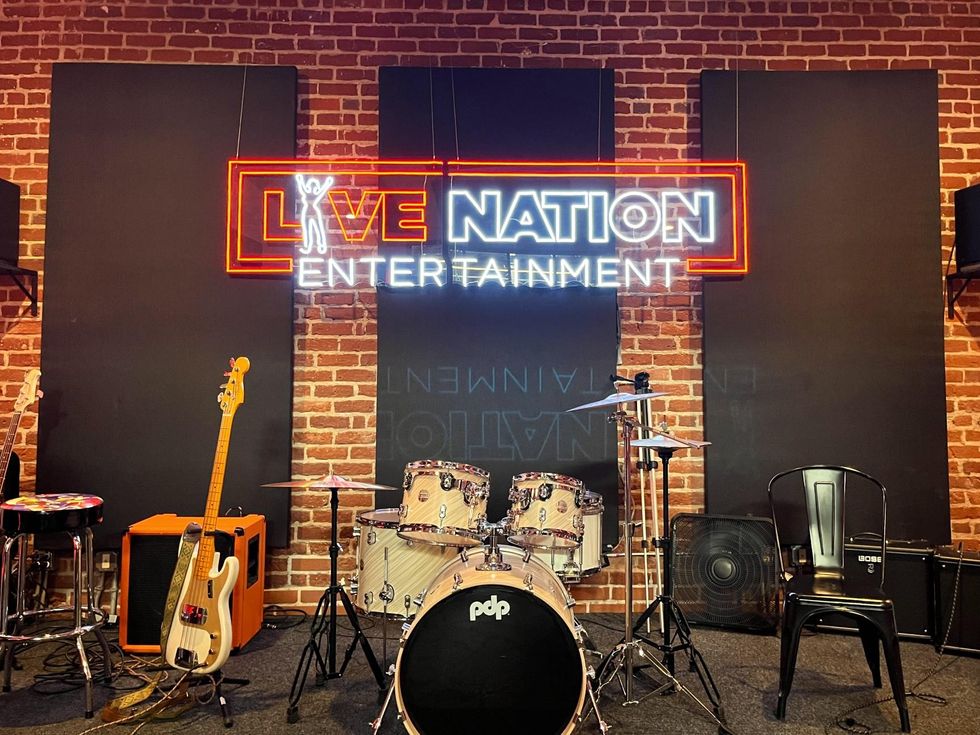
LiveNation Jam Room
A paradise for music lovers, LiveNation’s donation to SoLa helped fund its music room, which is complete with a sound board and everything needed to hold an open mic night or create a full band, including a drum kit where Rosove admitted he occasionally blows off steam during the workday.
There are tributes to the greats of West Coast hip-hop scattered around the room, including a framed copy of “The Chronic.” Across the hall there is a brand-new mixing studio funded in part by 1500 Sound Academy and N.W.A.’s Arabian Prince, who wanted SoLa to pass on production and DJ skills to a new generation.
LiveNation collaborated with SoLa on a program where students taking a 10-week course worked with its pros to put on its first local youth-led music festival, which was held on Aug. 12 with 15 live acts.
“It's set this great benchmark for what this program could be and what's really great is five of the students are moving on to internships at Live Nation,” Rosove said.
Virtual Reality and Gaming Lounge
If most students using SoLa’s facilities are accustomed to using their phones to access the internet and game, they’ll be blown away by the tech here. Towards the back of the center there are four gaming chairs and a brand new PS5 and Xbox Series S waiting to be used by eager teens.
Across the way, there are a dozen Oculus headsets in an open space for kids to flail around and experiment in VR. “We piloted an educational software put together through Meta around virtual world building in the spring but didn't quite hit,” Rosove said, noting they’re still working out the kinks.
The Grand Finale
The darkened, LED-lit cavern in the very back of SoLa’s facility is the real draw. It’s the Riot Games esports center, a scaled-down version of the company’s flagship West L.A. gaming arena.
Soon, it’ll be the home base for SoLa’s student esports team, which will compete in Riot Games titles like “Valorant.”
Part arena, part gaming café, this place is all awesome. In the back there’s a DJ booth and professional-grade voiceover booth nicknamed the SoLa Streaming Studio for students to practice “shoutcasting,” or calling an esports match, and tons of TVs to broadcast the action live. Right before the entrance to the green room is a wall of gaming history collected by Francois, including some consoles younger students might never have seen before (feel old yet, Sega Genesis?).
“I guarantee you, coming out of this Tech Center, at some point, you will see the first World Championships right out of South Central,” Francois said about the esports teams. She joked the gaming content is “the chocolate on the broccoli,” the glitzy fun part that gets kids in the door and then inspires them to learn other skills in the gaming world.
Riot’s branding is all over the esports arena, which could also double as an event space – Francois said SoLa’s eager to work with companies for private events to help keep the lights on.
“I will not forget this, we opened the doors [in January] and the first two kids were middle school students – they turned to each other and one, he said, ‘oh my god, is this for us?’ And the answer is hell yeah, it’s for you,” Rosove said.
Editor's note: This story has been updated with additional comment from a SoLa scholarship recipient.
From Your Site Articles
- Riot Games' Approach to Gaming's Workplace Reckoning - dot.LA ›
- Riot Games Give South LA Students Access to Tech Education - dot ... ›
- Riot Games' Hackers Invade 'League of Legends' - dot.LA ›
Related Articles Around the Web
Read moreShow less
Samson Amore
Samson Amore is a reporter for dot.LA. He holds a degree in journalism from Emerson College. Send tips or pitches to samsonamore@dot.la and find him on Twitter @Samsonamore.
https://twitter.com/samsonamore
samsonamore@dot.la
The Streaming Era Just Ate the Studio Era
10:45 AM | December 06, 2025
🔦 Spotlight
Hello Los Angeles!
In a week where everyone was already arguing about what “the future of entertainment” is supposed to look like, Netflix decided to skip the debate and buy a giant piece of the past and, possibly, the future. Netflix announced a definitive agreement to acquire Warner Bros. Discovery’s Studios and Streaming business, including Warner Bros. film and television studios plus HBO and HBO Max. This is not just another media merger. It is a power transfer, from the studio era where the gatekeepers were greenlight committees to the platform era where the gatekeepers are subscriber relationships, home screens, and retention math.
Here are the bones of the deal. WBD shareholders would receive $27.75 per share, made up of $23.25 in cash and $4.50 in Netflix stock, with the stock portion subject to a symmetrical collar. Netflix puts the transaction at roughly $72 billion in equity value and $82.7 billion in enterprise value, and expects it to close in 12 to 18 months, but only after WBD completes its planned separation of its Global Networks business into Discovery Global, now expected in Q3 2026.
Now zoom in on why this matters in Los Angeles specifically.
LA’s creative engine is about to be run by a single, very efficient distribution machine
Warner Bros. is not just a studio. It is an institutional muscle memory for how to develop, package, and produce at scale, plus a library and franchises that can carry a business through multiple economic cycles. Netflix is not just a distributor. It is the largest direct to consumer entertainment subscription platform on earth, built around global reach, product iteration, and data feedback loops. Put them together and you get a company that can create, market, distribute, and monetize premium entertainment without needing anyone else’s permission.
That will sound exciting to some creators and terrifying to others, often for the same reason. When the same entity owns the audience relationship and the content factory, it can take bigger swings because it has more margin for error. It can also take fewer swings because it does not need to. The incentive shifts from “What is culturally important?” to “What makes people stay?” Those are sometimes the same question. Sometimes they are not.
This deal won’t be decided in a writers’ room. It’ll be decided by regulators.
This is exactly the type of consolidation regulators have been itching to interrogate. A combined Netflix plus HBO Max instantly raises questions about market power, competition, and pricing, plus downstream effects on theaters, independent studios, and negotiating leverage with talent. Even if Netflix vows to maintain current operations and keep the consumer experience strong, the political story is straightforward: fewer giant buyers typically means less bargaining power for everyone who sells into the system.
Also worth noting, Reuters reports a termination fee of $5.8 billion under certain circumstances, which tells you both sides are bracing for a drawn out, high scrutiny process.
The quiet subtext: the bundle is coming back, just wearing a streaming hoodie
Netflix will almost certainly pitch this as more choice and better value. Regulators will hear less competition. Consumers will hear how much is this going to cost me. The most plausible end state is not a single mega app on day one. It is a reimagined bundle: separate brands, packaged pricing, shared sign on, cross promotion, and eventually tighter integration if the politics and churn math allow it.
The real disruption is not whether HBO Max keeps its name. It is whether Netflix becomes the default front door to premium scripted entertainment globally.
🤝 Venture Deals
LA Companies
- Castelion, a Torrance based defense technology startup, raised a $350M Series B round led by Altimeter Capital and Lightspeed Venture Partners, with participation from investors including Andreessen Horowitz, General Catalyst, Lavrock Ventures, Space VC, Avenir and Interlagos Capital. The money will be used to scale production of its Blackbeard hypersonic weapon, stand up its Project Ranger manufacturing campus in New Mexico, and support multiservice testing and integration with U.S. Army and Navy platforms starting in 2026. - learn more
- Antares announced a $96M Series B to accelerate an iterative “build, test, iterate” approach to developing nuclear reactors quickly, with the funding going toward hardware and subsystem testing, fuel fabrication, manufacturing, and the infrastructure to turn on a reactor. The company says it plans a low-power “Mark-0” reactor demonstration in 2026 at Idaho National Laboratory, with a pathway to a full-power electricity-producing reactor as early as 2027 and a commercial prototype microreactor (“Mark-1”) after the Mark-0 milestone. - learn more
LA Venture Funds
- With FirstLook Partners participating, Flex raised a $60M Series B led by Portage, bringing its total equity raised to $105M to build an AI native finance platform for middle market business owners. The company says it will use the new funding to accelerate product expansion and scale its AI agent infrastructure across areas like private credit, business finance, personal finance, payments, and ERP. - learn more
- Led by MTech Capital, Curvestone AI raised a $4M seed round with participation from Boost Capital Partners, D2 Fund, and Portfolio Ventures to scale its AI automation platform for regulated industries like financial services, legal, and insurance. The company says it’s tackling the “compound error” problem that makes multi step AI workflows unreliable, and will use the funding to accelerate product development and go to market expansion. - learn more
- Co-led by CIV, Unlimited Industries raised a $12M seed round (alongside Andreessen Horowitz) to scale its “AI-native construction” approach to designing and building major infrastructure projects. The company says its platform can generate and evaluate massive numbers of design configurations to optimize for cost, safety, and performance, cutting pre-construction engineering timelines from months to weeks, and it is initially focusing on projects that rapidly expand U.S. power capacity for things like data centers, critical minerals, and advanced manufacturing. - learn more
- With Hyperion Capital participating (alongside Amplify Venture Partners, Spark Capital, Tamarack Global and others), Antithesis raised a $105M Series A led by Jane Street, which is both an investor and an existing customer. The company says it will use the capital to accelerate its deterministic simulation testing platform and scale go to market efforts across North America, Europe, and Asia, positioning the product as “critical infrastructure” for teams running complex distributed systems. - learn more
- With XO Ventures participating, Orq.ai raised an oversubscribed €5M seed round led by seed + speed Ventures and Galion.exe to help enterprises build, deploy, and manage production grade AI agents with stronger control over data, behavior, and compliance. The company says the funding will accelerate expansion of its platform, including its newly launched Agent Studio and managed runtime, as it pushes to close the “AI production gap” for companies moving beyond demos into real deployment. - learn more
- Untapped Ventures participated in Lemurian Labs’ oversubscribed $28M Series A, co-led by Pebblebed Ventures and Hexagon, as the company builds a software-first platform designed to run AI workloads efficiently across any hardware and across edge, cloud, and on-prem environments. Lemurian says the funding will help it expand engineering, accelerate product development, and deepen ecosystem collaborations aimed at reducing vendor lock in and infrastructure costs. - learn more
- Fifth Wall and Park Rangers Capital participated in Ridley’s $6.4M seed round, which Fifth Wall led, backing the company’s push to rebuild the real estate process around consumers with fewer commission-heavy frictions. Ridley says the capital will help launch an AI-powered buy-side experience that surfaces private, for-sale, and “soon-to-be-listed” homes using predictive analytics, while also expanding its commission-free seller tools and “Preferred Agents” network for on-demand support. - learn more
- Anthos Capital participated in Kalshi’s $1B Series E at an $11B valuation, a round led by Paradigm with other backers including Sequoia, Andreessen Horowitz, Meritech, IVP, ARK Invest, CapitalG, and Y Combinator. Kalshi says its trading volume now exceeds $1B per week across 3,500+ markets, and it will use the new capital to accelerate consumer adoption, integrate more brokerages, strike news partnerships, and expand product offerings. - learn more
Read moreShow less
RELATEDTRENDING
LA TECH JOBS

